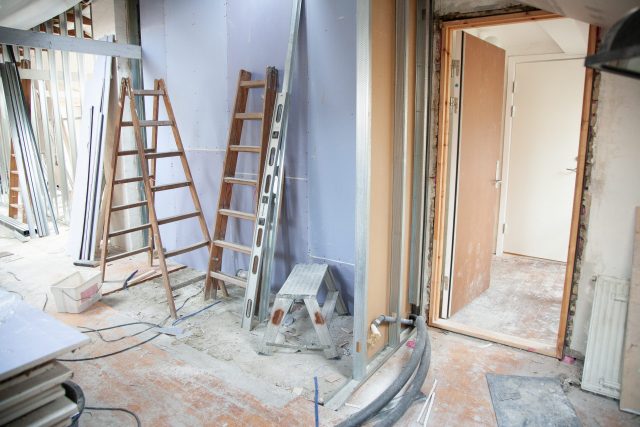
Ladder Injuries: Preventable, But All Too Common
We have represented many clients over the years who have suffered serious injuries at work as a result of ladder accidents. Recovery from these injuries can be long and painful. The experienced workers’ compensation attorneys at Sadow & Froy fight to make sure that our clients who have suffered falls at work receive the maximum income benefits they are entitled to as well as top quality medical treatment. Our goal is to see that our clients have the best physical recovery and financial recovery.
Ladder accidents on-the-job happen frequently, despite that fact that they are entirely preventable if workers are given proper equipment and climbing training. Unfortunately, far too often, that is not the case. Approximately half of all ladder related accidents are due to workers carrying items as they climb. The most common type of injuries that results from a ladder related fall are fractures.
The majority of work related ladder accidents fall into four different categories:
1. Selecting the Wrong Type of Ladder
One thing to consider when selecting an appropriate ladder is the ladder’s weight capacity. Each ladder is designed to support a maximum weight limit and if the climber exceeds that limit the ladder could break and cause the user to fall or become injured.
Another consideration when selecting the appropriate ladder for a job is the necessary height of the ladder. Many injuries occur due to ladders being too short for a specific task, and instead of selecting a new ladder for the job, workers will place the ladder on something to extend its reach or will stand on the top rung to gain the necessary height. Both scenarios are extremely dangerous and can result in serious injuries.
2. Using Worn or Damaged Ladders
Another common contributing factor to ladder accidents is the use of old, worn, or damaged ladders. Like everything else, ladders have a shelf life; after a couple of years the stress of being climbed up and down on causes ladders to break down. Damaged ladders are extremely dangerous as they can easily break while being used and cause serious injuries.
To protect yourself from damaged or broken ladders, make sure to thoroughly inspect each ladder before using it. If any damage is found, do not use the ladder until it has been safely repaired or replaced.
3. Incorrect Use of Ladders
Never use a ladder in any other way than what the manufacturer intended it to be used for. Also, do not lengthen or alter a ladder in any way.
While using a ladder always maintain 3 points of contact with the ladder to ensure stability. Also, never attempt to reach for something while on the ladder. It is much safer to get off the ladder, move it, and then climb back up.
4. Incorrect Placement of Ladders
Make sure that when positioning a ladder, the ground you place it on is level and firm. Ladders should never be placed in front of a door that is not locked, blocked, or guarded.
A good practice to ensure a ladder is secure is to always have a helper support the base while a ladder is being used. If the ladder can not be held by someone else, make sure it has an appropriate foot to prevent it from slipping. If you are using a ladder outside and no one is available to support the feet of the ladder, the feet of the ladder may be staked.
If you, a friend, or a family member has fallen from a ladder at work, we can help. Call Susan J. Sadow or Heather D. Froy at 770-984-8900 today so schedule a free consultation. Be smart and protect yourself! You will be glad you did.


